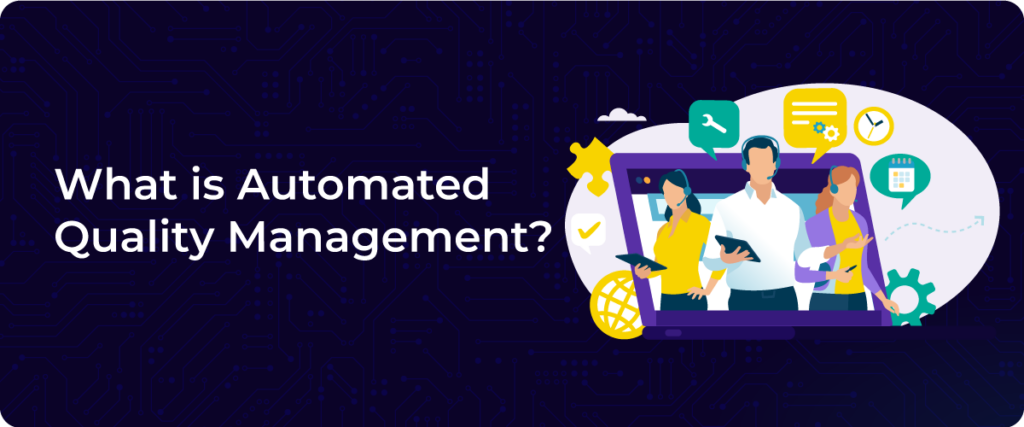Customer engagement has become a key focus for companies looking to build lasting relationships with their customers.
In fact, 80% of consumers say that the experience a company provides is just as important as the products or services offered. This emphasizes the importance of not only attracting customers but keeping them engaged.
In this blog, we’ll explore with the shared agenda outlined below:
Agenda
1. Understanding the Basics of Customer Engagement
2. The Value of Strategic Customer Engagement
3. Essential Customer Engagement Metrics
4. How to Create an Effective Customer Engagement Strategy
5. Customer Engagement Tools and Platforms
6. ConvoZen.AI: Elevating Customer Engagement
7. Conclusion
8. Frequently Asked Questions (FAQs)
Understanding the Basics of Customer Engagement
Customer engagement is all about building a genuine connection between a brand and its customers. It’s more than just selling a product—it’s about creating meaningful interactions that keep customers coming back. This happens through personalized communication, listening to feedback, and meeting their needs consistently.
At its heart, customer engagement is about trust and loyalty. It involves strategies like customer engagement marketing, where businesses use content, social media, and direct outreach to stay connected with their audience.
By understanding what customers want and how they behave, businesses can improve customer satisfaction and create lasting relationships that turn one-time buyers into loyal fans.
The Value of Strategic Customer Engagement
1. High ROI through Effective Engagement
When businesses focus on customer engagement, they often see a significant return on investment. Engaged customers are more likely to make repeat purchases, reducing customer acquisition costs and increasing overall revenue.
2. Building Brand Loyalty
Consistent engagement helps build strong relationships with customers. By providing personalized interactions, you create a sense of trust and connection that encourages customers to stay loyal to your brand. This leads to repeat business and greater brand advocacy.
3. Impact on Customer Lifetime Value (CLV)
Engaging customers regularly ensures their needs are being met, leading to higher satisfaction. As a result, they’re more likely to stick with your brand, increasing their lifetime value.
Loyal, engaged customers are also more likely to recommend your brand to others, which contributes to organic growth.
Strategic customer engagement isn’t just about one-time sales; it’s about creating lasting relationships that lead to loyalty, increased CLV, and better overall business growth. By investing in engagement, you’re setting your business up for long-term success!
Essential Customer Engagement Metrics
The five essential consumer engagement metrics you should track to understand how well you’re connecting with your audience are:
1. Customer Satisfaction (CSAT)
This metric shows how happy your customers are after interacting with your business. You can gather this through simple surveys. A high CSAT score means your engagement efforts are hitting the mark, while a low score points to areas that need improvement.
2. Net Promoter Score (NPS)
NPS tells you how likely your customers are to recommend your brand to others. A high NPS score suggests strong loyalty, while a lower score could indicate that your engagement strategies aren’t resonating as well as they could. It’s a great way to measure customer sentiment and track changes over time.
3. Customer Retention Rate
This metric tracks how well you’re keeping your customers. If your retention rate is high, it means your engagement efforts are paying off, and customers are sticking around. A low retention rate, however, suggests that your strategies may need to be reworked to create lasting connections.
4. Customer Lifetime Value (CLV)
CLV measures the total revenue a customer will bring to your business throughout their relationship with you.
Engaged customers tend to have higher CLV because they’re more likely to make repeat purchases and stay loyal. It’s a great way to gauge the long-term impact of your engagement efforts.
5. Engagement Rate
This one tracks how often customers interact with your content, whether it’s through emails, social media posts, or website activities. A high engagement rate shows that your customers are interested and invested in what you’re sharing, and it gives you valuable insights into what resonates best.
How to Create an Effective Customer Engagement Strategy
A strong customer engagement strategy helps businesses build excellent rapport with customers, improve satisfaction, and boost revenue. Here’s a step-by-step approach to creating one:
1. Understand Your Audience
To understand more about your audience, create customer personas. Start by analyzing customer behavior, preferences, and pain points. Use customer engagement metrics like retention rates and feedback to understand what they expect.
Example: A fitness app may find that users engage more with personalized workout plans than general fitness content.
2. Personalize Interactions
Customers appreciate brands that offer tailored experiences. Use consumer engagement software to analyze data and create personalized emails, offers, and recommendations.
3. Choose the Right Communication Channels
Channels are the medium you use to communicate. Using LinkedIn to make sales for candy is not the most optimal solution so it is important to understand that not all customers engage the same way. Some prefer emails, while others respond better to social media, chatbots, or calls.
A customer engagement platform can help streamline communication across multiple touchpoints. For example, a clothing brand uses Instagram stories to engage young customers and email campaigns for older demographics.
4. Create Value-Driven Content
Engaging users at any point in their journey as a customer is very important. Offer educational blogs, webinars, or loyalty programs that add value beyond selling. Engaged customers are those who feel your brand is solving their problems.
5. Leverage Technology & Automation
We are in an era where automation can be used to create art which takes months to do and it is the perfect time to implement automation in your business. Use digital customer engagement tools like AI chatbots and automated follow-ups to maintain consistent communication without overwhelming your team.
6. Collect and Act on Feedback
Engagement is a two-way street. Regularly gather customer feedback through surveys and reviews, then implement changes based on their suggestions.
Learn about effective ways to collect customer feedback here.
7. Measure and Optimize
Track performance using engagement metrics like click-through rates, response times, and churn rates. Adjust your strategy accordingly to improve results.
Customer Engagement Tools and Platforms
1. HubSpot (CRM)
HubSpot is a customer engagement platform that helps businesses manage relationships by tracking interactions, automating follow-ups, and personalizing communication. It’s widely used for email marketing, lead nurturing, and customer retention.
2. Zendesk (Help Desk Software)
Zendesk is a customer engagement software designed for support teams. It streamlines ticketing, live chat, and self-service options, making it easier to resolve customer issues efficiently. Businesses use Zendesk to provide faster responses and enhance customer satisfaction.
3. Braze (Marketing)
Braze specializes in customer engagement marketing, offering personalized messaging across email, mobile push notifications, and in-app messaging. It helps brands create data-driven, automated marketing campaigns to boost engagement.
4. ConvoZen.AI (Conversational Cloud Platform)
ConvoZen.AI is an advanced customer engagement tool that provides a 360° approach to customer interactions. Unlike traditional platforms, it integrates calls, chats, social media, and feedback forms into a single system, ensuring seamless engagement across all channels.
A. Voice of Customer Insights
Understand customer sentiment through AI-driven analysis.
B. Quality Assurance
Monitor interactions to ensure compliance and service excellence.
C. Call Summaries & Conversational Analytics
Generate AI-powered insights from calls to improve support and sales strategies.
D. Omnichannel Support
Manage all interactions—calls, social media messages, and emails—in one place for a unified customer experience.
E. Agent Training
ConvoZen.AI helps in training your agents by their individual strengths and weaknesses. ConvoZen.AI can enable businesses to identify agents who need specific, customized training and tailor training programs accordingly for maximum impact.
With ConvoZen.AI, businesses can turn conversations into actionable insights, improve customer satisfaction, and enhance overall digital customer engagement.
ConvoZen.AI: Elevating Customer Engagement
ConvoZen.AI helps businesses connect better with their customers through AI-driven insights and seamless support across all channels. From call summaries to quality checks, it makes every interaction more effective.
Here’s what our customers have to say:
Mr. Giridhar Yasa, CTO, Lendingkart shares how ConvoZen’s AI-driven automation has ensured that they never miss a customer follow-up, reducing lost leads and improving the overall customer experience.
Mr. Gajendra Jangid, the Co-founder and CMO of Cars24 tells that with ConvoZen.AI, their new agents can now produce the same output quality as their more tenured agents, ensuring consistency across the board.
He also shares upon how today, 100% of their calls pass through ConvoZen.AI which ensures quality consistency, helps them provide customized training, and makes their customer engagement more dynamic and efficient.
Conclusion
Customer engagement is all about building real connections, not just answering questions. ConvoZen.AI makes this easier by helping businesses manage calls, chats, and social media in one place while providing smart insights to improve every interaction.
With the right tools, you can keep customers happy, improve service, and build lasting relationships. When engagement feels natural and effortless, customers keep coming back—and that’s what truly matters.
Frequently Asked Questions (FAQs)
1. What is Customer Engagement?
Customer engagement is the process of building strong relationships with customers through meaningful interactions across various touchpoints. It involves communication, personalization, and value-driven experiences that foster loyalty, satisfaction, and long-term business success.
2. What are the 4Ps of Customer Engagement?
The 4Ps of customer engagement are Personalization, Proactive Support, Participation, and Peer Influence. These elements help businesses create tailored experiences, anticipate customer needs, encourage active involvement, and leverage social proof to build trust and stronger connections.
3. What are the Three Pillars of Customer Engagement?
The three pillars of customer engagement are Emotional Connection, Consistency, and Value Creation. Businesses that evoke emotions, maintain reliable interactions, and offer meaningful value can build lasting relationships, improve customer satisfaction, and drive loyalty over time.
Unleash Your Contact Center’s Potential Today! 👉 Get Started with ConvoZen.AI and Elevate Customer Experience.


